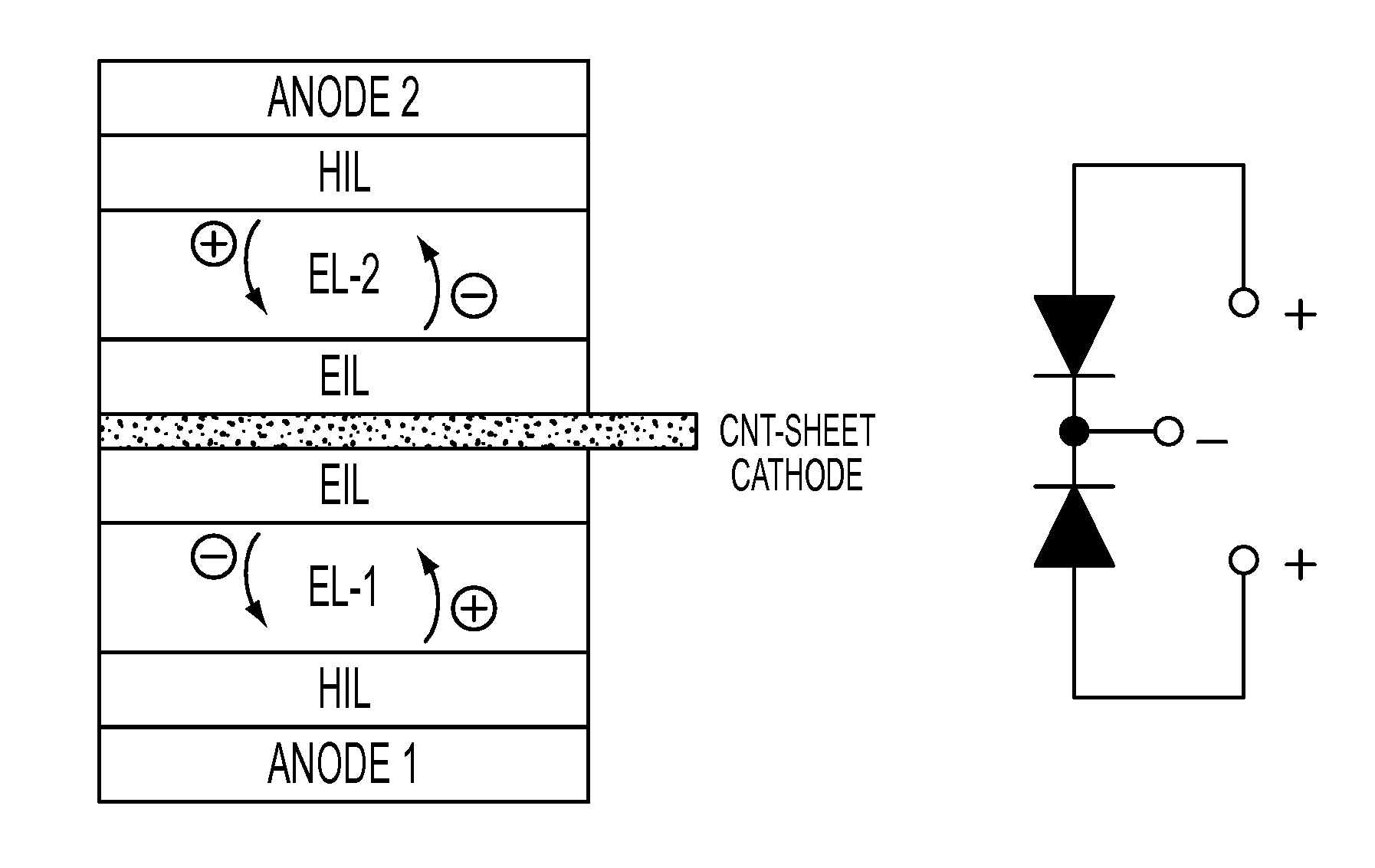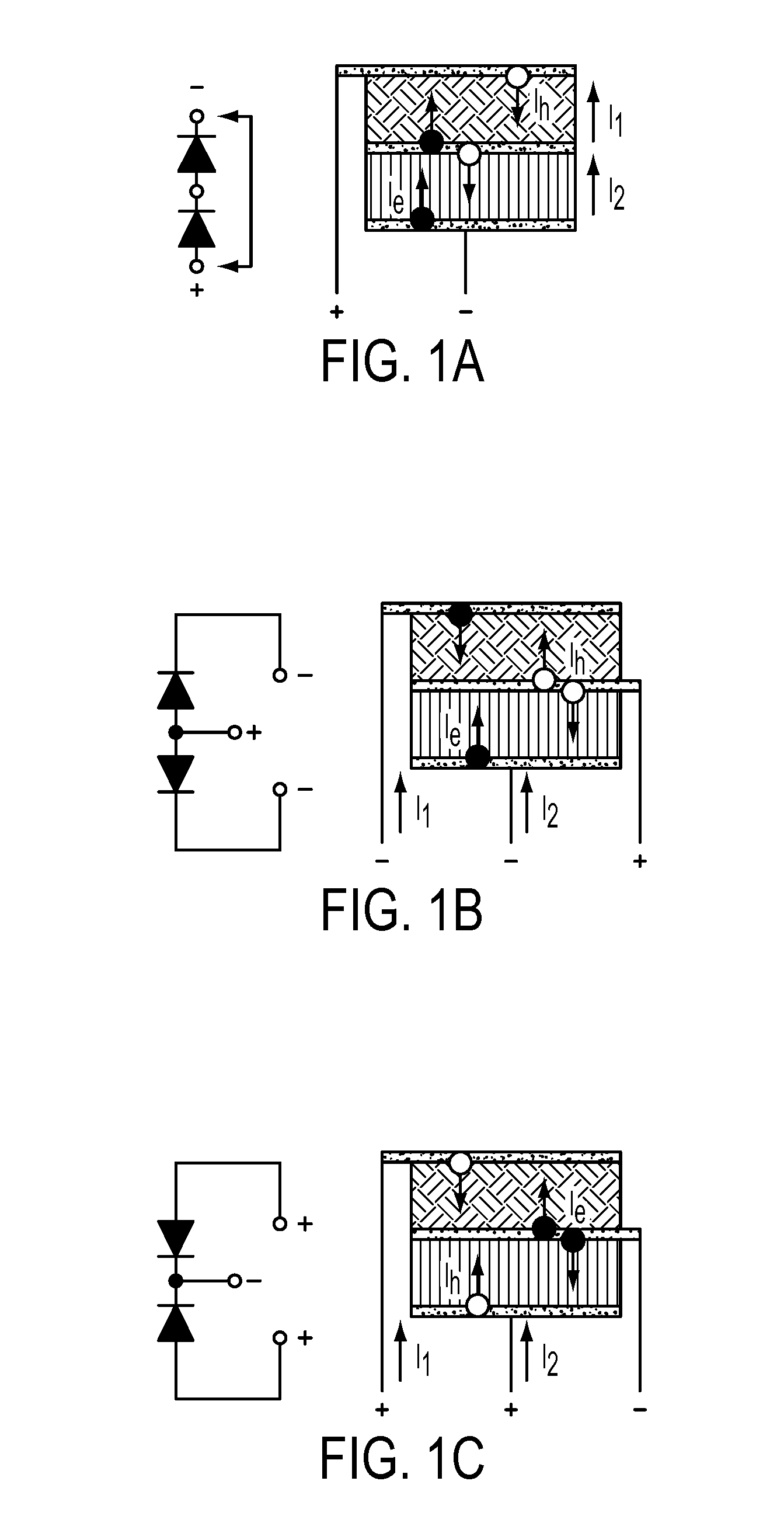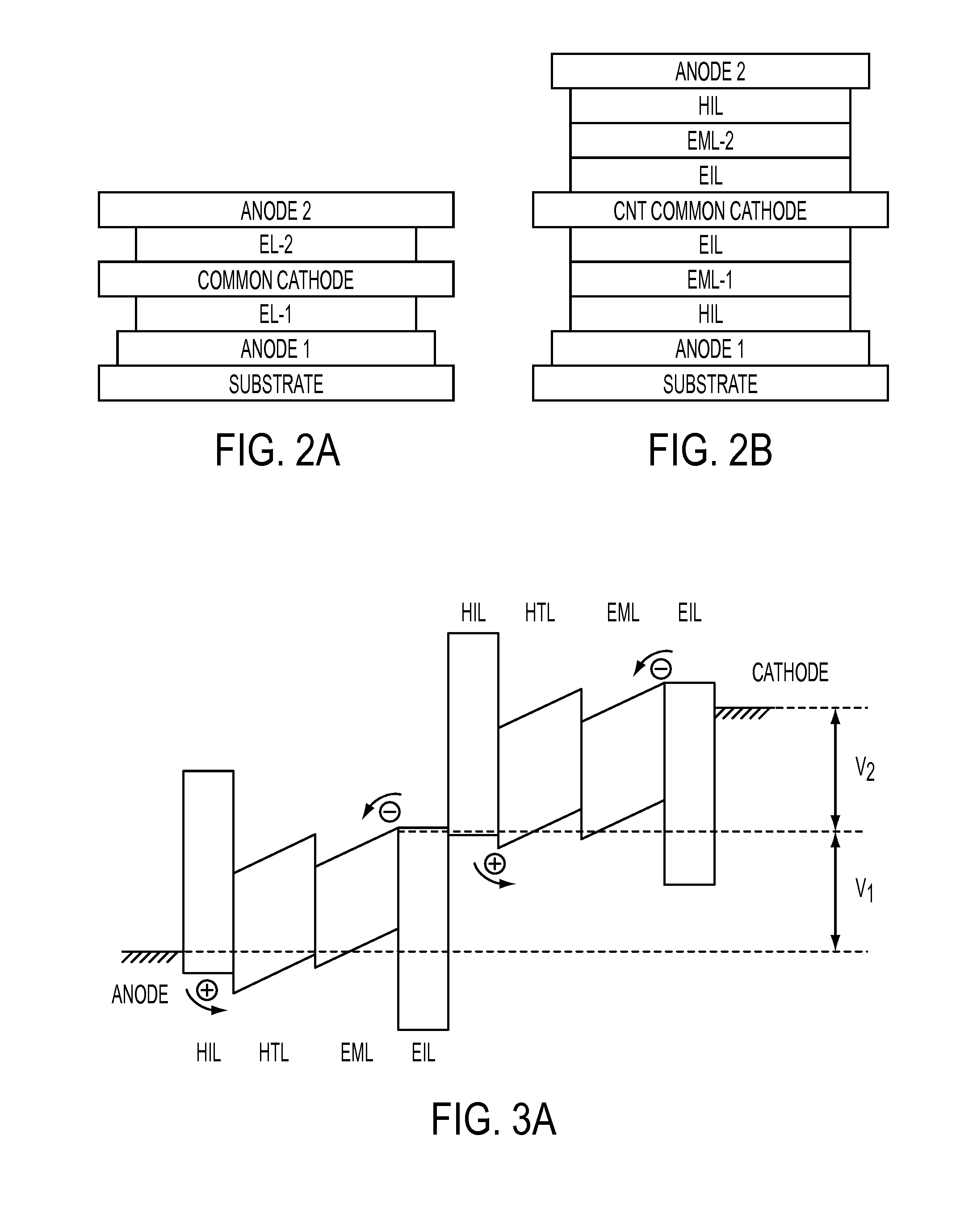Monolithic parallel multijunction OLED with independent tunable color emission
a multijunction oled, independent technology, applied in the direction of organic semiconductor devices, solid-state devices, thermoelectric devices, etc., can solve the problems of increasing complexity of the fabrication process, requiring delicate vacuum handling and either evaporation or sputtering processes, and reducing the efficiency of charge injection
- Summary
- Abstract
- Description
- Claims
- Application Information
AI Technical Summary
Benefits of technology
Problems solved by technology
Method used
Image
Examples
working examples
Example 1
[0048]The process of dry-drawing of CNT sheets has been discovered by scientists at the Nanotech Institute of The University of Texas at Dallas and has been improved further by several groups, including those who emphasize the drawing of CNT yarns and fibers. Synthesis of CNT is done inside a three zone furnace with two inch diameter quartz tube will be utilized for Chemical Vapor Deposition (CVD) of CNT. Acetylene gas is inserted in a reactor at about 700° C. during the growth process. This CVD furnace will grow multi-walled carbon nanotubes (MWCNT) on the silicon wafer with iron catalyst deposited by e-beam deposition. After the CNT forest is grown on the silicon wafer, the forest can be pulled out and transferred as free standing CNT sheets. A CNT forest grown on the surface of a Si substrate is shown FIG. 11. A CNT sheet is then pulled off the forest and a continuous strand is formed. The CNT sheet it placed free standing on the CNT sheet holder as for storage and trans...
example 2
[0049]FIGS. 12 and 13 illustrate transparent OLEDs with CNT sheets. A transparent bottom cathode, similar to the ones described above, is fabricated on glass substrate. An emissive layer is deposited and then the CNT sheet is deposited to form the anode. In FIG. 12, the device structure is very similar to the bottom unit of tandem OLED, except that CNTs are not required to be placed between two hole injecting layers. FIG. 13 demonstrates another structure for transparent OLED devices. In this configuration, the CNT sheets are transferred on top of the transparent substrate. Next, a planarizing layer of PEDOT:PSS is spin casted before the active layer. The cathode is fabricated by deposition of transparent cathode on top that can be fabricated by bilayers of electron injecting materials (Ca, Mg, LiF, Cs, Bphen, Cs2CO3) and a metal (Ag,Al,Ni). A second layer of CNTs may be applied instead of the metal layer.
example 3
[0050]Flexible substrates are compatible with CNT sheets for flexible OLEDs. FIG. 14 illustrates a similar device to Example 2 (FIG. 13) but on a flexible substrate. Traditional transparent conductive oxides (such as ITO) are brittle and may crack under tension. CNT sheets have excellent mechanical and electrical properties and are excellent alternatives to ITO. CNT sheets are transferred on a polyethylene terephthalate (PET) substrate and the resulting surface is planarized prior the deposition of the emissive layer. An electron injection layer and the cathode are added to conclude the fabrication. The parallel tandem architecture of the claimed invention is compatible with flexible substrates and devices as shown in FIG. 10 can be fabricated in the same way.
PUM
 Login to View More
Login to View More Abstract
Description
Claims
Application Information
 Login to View More
Login to View More - R&D
- Intellectual Property
- Life Sciences
- Materials
- Tech Scout
- Unparalleled Data Quality
- Higher Quality Content
- 60% Fewer Hallucinations
Browse by: Latest US Patents, China's latest patents, Technical Efficacy Thesaurus, Application Domain, Technology Topic, Popular Technical Reports.
© 2025 PatSnap. All rights reserved.Legal|Privacy policy|Modern Slavery Act Transparency Statement|Sitemap|About US| Contact US: help@patsnap.com



